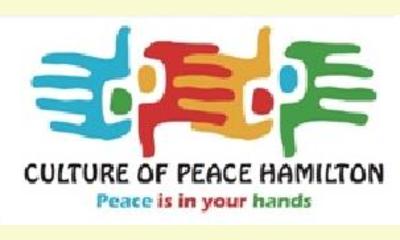|
|
The Social Geography Project of Hamilton
an article by Culture of Peace Hamilton
Although much collaborative work is already being done, Culture
of Peace Hamilton [Ontario, Canada] is conducting research to assess the
size and social attitudes of literally hundreds of Hamilton individuals
and groups whose voices of concern and compassion are often overlooked
or discounted when important decisions are being made. 
click on photo to enlarge
The
missing link that binds so many smaller groups together is their
passion for social justice and the desire to be heard. This is the bond
that links faith groups with environmentalists; those who support food
banks with youth gyms; disaster relief workers with women’s shelters;
and anti-bullying programs with health promotion or poverty reduction.
The
outcome of this research will contribute to the establishment of a
Culture of Peace Commission in Hamilton, based on the six principles of a
Culture of Peace as sponsored by the United Nations.
Using the
principles of the Manifesto 2000 as guides for poverty reduction, social
inclusion, environmental protection, and anti-bullying, a Culture of
Peace Commission could use our kind of research to audit progress
towards a more equitable, less violent society. The Manifesto’s six
principles are applicable to small groups as well as nations. They can
apply to powerful institutions like corporations, city councils, school
boards, and even the police.
See examples below:
Respect All Life:
City Council
Public education – Schools, Colleges, Universities
Safe and respectful Police Services
Upholding human rights – International and Charter
Reject Violence:
Anti-bullying groups
Violence against women, sexual assault etc.
Victim services
John Howard Society, Elizabeth Fry Society etc.
Share with Others:
Public services – water, electricity, transportation, etc.
Poverty reduction
Food Banks etc.
Immigration Services
Listen to Understand:
Restorative Justice
Gay rights initiatives
Non-violent Communication (NVC)
Alternate Dispute Resolution (ADR)
Healing circles and circles of support
Preserve the Planet:
Anti-pollution – all environmental groups
Alternate energy initiatives
Greenhouse gas reduction targets
Conserving green space
Rediscover Solidarity:
Interfaith Groups
Block Parent
Women’s groups
Local citizen initiatives
|








|
DISCUSSION
Question(s) related to this article:
What is a culture of peace city
and how does one become one?
Thematic forum(s) in which this article is being discussed:
CULTURE OF PEACE CITIES - VILLES CULTURE DE PAIX
LATEST READER COMMENT:
I
believe that the development of a network of culture of peace cities
can be a decisive factor in the transition from a culture of war to a
culture of peace based on a profound reform of the United Nations
system. The following are excerpts from my book World Peace through the Town Hall.
My
experience working in the United Nations system for ten years and
observing it closely for seven years since my retirement makes me
optimistic that the UN system is capable of managing a transition to the
culture of peace. The various specialized agencies that deal with
health care, education, food and agriculture, science, communication,
not to mention technical questions such as aviation, shipping, atomic
energy, etc. are staffed by a capable international secretariat with
experience in the day-to-day management of global issues. The UN General
Assembly, as well as the international assemblies of other agencies
such as the General Conference of UNESCO, provide important forums. Even
the Security Council, the World Bank and the International Monetary
Fund which are now in the hands of a few powerful states and used to
support their culture of war could play important roles in the
transition to a culture of peace if they were transformed under control
of "we the peoples" instead of the state.. . ...more.

|
|
|
This report was posted on August 11, 2011.
If you wish to start a new discussion topic on this article, please copy the title of this article which is The Social Geography Project of Hamilton and its number which is 530 and enter this information along with your discussion question and an introductory response to the question here.

A few stories are retained on the main listings if they are considered
by readers to be a priority. If you have not already done so, please
take the time to check a box below: should this article be considered as
a priority?

|







